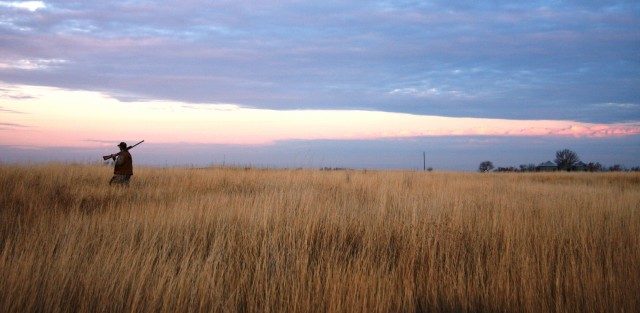The Outdoor Heritage Fund Doesn't Need Fixing, It Needs Repeal

This election year North Dakota had a titanic debate over a constitutional amendment – Measure 5, specifically – which would have diverted hundreds of millions of tax dollars into a slush fund for conservation interests. Deep-pocketed advocacy groups like Ducks Unlimited spent millions promoting their measure, but were soundly defeated after a ham-handed campaign netted them just 10,000 more votes than there were signatures to put the issue on the ballot in the first place.
[mks_pullquote align=”right” width=”300″ size=”24″ bg_color=”#000000″ txt_color=”#ffffff”]”Far from expanding the Outdoor Heritage Fund, lawmakers ought to gut it. Remove the continuing appropriation and invite worthy projects to be submitted to the full legislature for debate. The evidence supporting this move is clear. Not all of the existing OHF funds are being used, and what funds are being used are hardly going to projects worthy of the time of those involved in the fund.”[/mks_pullquote]
But in 2013, before Measure 5 made the ballot, legislators sought to ease concerns over conservation spending by creating the Outdoor Heritage Fund. The fund got a $30 million per-biennium continuing appropriation, and a board of appointees to recommend grants out of the fund for approval by the North Dakota Industrial Commission.
The fund has gone through three rounds of grants so far in the 2013-2015 biennium (see all approved projects here), and a fourth and final round for the biennium has a deadline of April 1st. It doesn’t seem as though the fund will see enough projects to spend all $30 million, and the some of projects requesting funding have been less than impressive.
“I was probably a little surprised at the number of playgrounds we’re getting,” Wade Moser, who is serving as the chairman of the fund’s board, told the Bismarck Tribune.
That makes it sound as though the fund has been seen less as capital for needed conservation projects than a way for local governments to get someone else to pay for their local projects.
But despite a much expanded version of the Outdoor Heritage Fund flopping at the ballot box (nearly 80 percent said no), and the fact that the fund isn’t even using all of its current appropriations, Governor Jack Dalrymple has called for an expansion of the fund up to $50 million in his executive budget while the state’s editorial boards ask for a “fix” for the fund.
“Measure 5 supporters argued that $30 million wasn’t enough to cover conservation needs. However, if all of the $30 million isn’t allocated this biennium, the question becomes why,” the Bismarck Tribune writes in an editorial today. “Are people and groups unaware they qualify? Are the ground rules for qualifying too tough? Do groups want more money for big projects that isn’t available at the moment?”
The Grand Forks Herald agrees, arguing that the fund should be restricted to projects of “statewide significance” and that lawmakers should approve the use of the fund to purchase land for things like boat ramps and hiking trails, emulating Minnesota’s Legacy Fund.
None of these positions passes the smell test.
The existence of the Outdoor Heritage Fund has been well-publicized. If groups aren’t availing themselves of the funds, should we conclude that they aren’t informed? Or are we assuming too much about the need for this sort of funding?
As for removing restrictions for the fund, there’s no question that using public dollars to acquire land is a touchy subject in North Dakota. In fact, the state has a constitutional prohibition on non-profits purchasing lands which requires the express approval of the Governor to bypass.
While I don’t generally agree with that prohibition – I’m not sure why the government should come between willing sellers and willing buyers – the reality of the issue illustrates why the Outdoor Heritage Fund was such a bad idea to begin with.
If we want to fund projects of “statewide significance” why can’t lawmakers consider them on a case-by-case basis during the state’s biennial legislative session? Significant projects should get significant scrutiny, and what better process for that scrutiny than the appropriations process we already have at the legislature?
When did the legislative process stop being good enough?
Far from expanding the Outdoor Heritage Fund, lawmakers ought to gut it. Remove the continuing appropriation and invite worthy projects to be submitted to the full legislature for debate. The evidence supporting this move is clear. Not all of the existing OHF funds are being used, and what funds are being used are hardly going to projects worthy of the time of those involved in the fund.
Lawmakers probably won’t do this, sensitive as they are to the politics surrounding conservation (not to mention the bias for conservation held by the state’s media), but at the very least the OHF ought to be left as-is.




